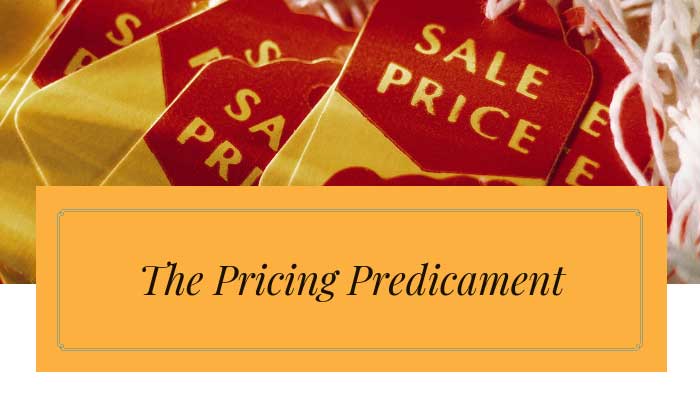 We’ve been told through books and speeches that in order to make a boat load of money and be successful, we need to raise our prices to an uncomfortably high level. How many times have we heard, “you need to raise your prices until you feel sick to your stomach, and then raise them higher”?
We’ve been told through books and speeches that in order to make a boat load of money and be successful, we need to raise our prices to an uncomfortably high level. How many times have we heard, “you need to raise your prices until you feel sick to your stomach, and then raise them higher”?
In general, yes, the higher your prices, the more you will make per transaction. And the higher your prices the more accurately you communicate the value of working with you. After all, it’s exhausting to serve the discount diggers, the coupon clippers and the bargain busters. You want to attract the BEST client who wants the BEST value.
Raising prices is one end of the equation. The other end is – WHO is your ideal, best, perfect client? Now in order to command a higher price tag, you’ll use that tired expression: “high end client”. The customers who will pay your now stomachache inducing prices are wealthy people.
Anything wrong with that?
Plenty. Because choosing your IDEAL client does not mean choosing the wealthiest people you can reach. Targeting the “high-end client” does not mean fulfilling your mission of serving the people you WANT to serve. It means chasing those with the biggest bank account.
If you were to triple and quadruple your prices, and only target the wealthy, that opens up a whole box of problems. This means you have to shut out those people who really need and want your help but who are having financial issues. So – basically – good people on the lower income scale don’t deserve you. Does that sound right?
Not to me. And if the ONLY way to make money is by artificially raising your prices to the point where only wealthy people can afford it, then please explain this to the CEO of Wal-Mart. You can let their entire executive board know that their business model is WRONG.
They specifically serve their ideal client, and they do it remarkably well. While other retail stores are closing down, Wal-Mart remains a huge staple in our economy.
Now I’m not telling you to “roll back” your prices Wal-Mart style, necessarily. I’m asking you to consider who you really want to serve and then come up with prices and packages that really serve them with huge value and serve your revenue goals and mission.
Your best price is NOT the lowest nor the highest imaginable.
Let’s say you have a $300 service: you can raise it to $450 but add “more stuff” for a higher value proposition. At $450 you don’t necessarily turn away the great clients you had, because they love the “more stuff” you added. And attracting more clients is actually easier because the new value is head and shoulders above your competition. You didn’t offer the same thing for double or triple the price “just because”. You raised the price and increased what they get for that price, with a specific intention.
Now this strategy means more work on your part (because of the “extra stuff”) but you can chase less clients. Another strategy is to offer LESS “stuff” for a lower price. So you cut back on what they get but the price is now 200. Less work for you and now the price is more attractive to those on the fence, and for those whom the “extra stuff” was not what they wanted.
Another strategy is to make more money in less time by offering a group version of what you do. For example, $800 for a single person private session, or $200 for 6 people in a group session. Either method works if you plan it out to be sustainable.
Adjustments
Adjusting the price up and down according to WHAT you want to deliver and WHO you want to work with are items to address when you’re planning your offers and your goals.
As you may have concluded, there is no one straight answer. There are many tactics and possibilities. I love helping MY BEST CLIENTS with this and other business growth strategies. Please let me know how I can help you have the best year yet.

